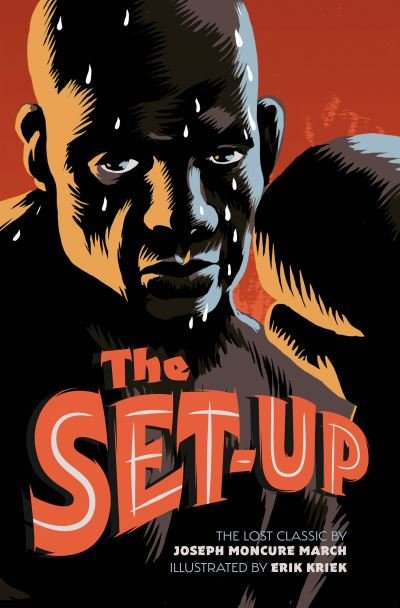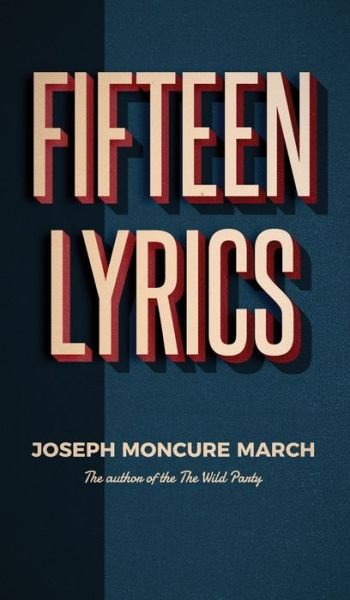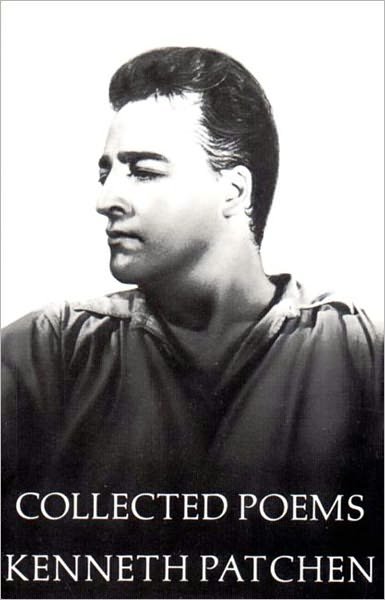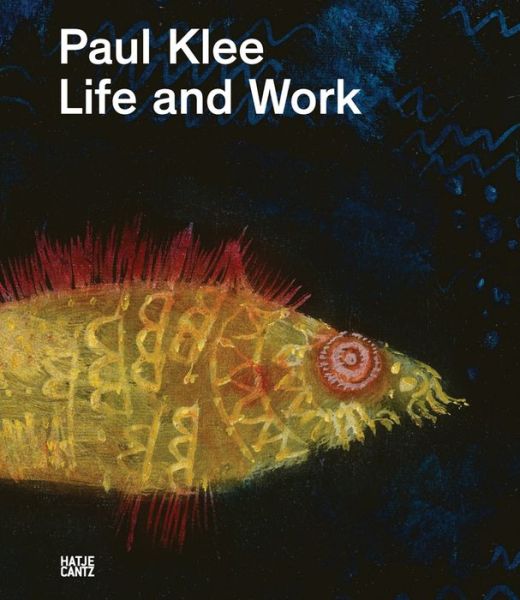
Tell your friends about this item:
The Wild Party: the Lost Classic by Joseph Moncure March
Joseph Moncure March
The Wild Party: the Lost Classic by Joseph Moncure March
Joseph Moncure March
Jacket Description/Flap: "Spiegelman's drawings are like demonic woodcuts: every angle, line, and curve jumps out at you. Stylishness and brutishness are in perfect accord."-- "The New York Times Art Spiegelman's sinister and witty black-and-white drawings give charged new life to Joseph Moncure March's Wild Party, a lost classic from 1928. The inventive and varied page designs offer perfect counterpoint to the staccato tempo of this hard-boiled jazz-age tragedy told in syncopated rhyming couplets. Here is a poem that can make even readers with no time for poetry stop dead in their tracks. Once read, large shards of this story of one night of debauchery will become permanently lodged in the brain. When The Wild Party was first published, Louis Untermeyer declared: "It is repulsive and fascinating, vicious and vivacious, uncompromising, unashamed . . . and unremittingly powerful. It is an amazing tour de force."Biographical Note: Joseph Moncure March was a poet, journalist and screenwriter best known for his two verse narratives, The Wild Party and The Set-Up, the story of a washed-up black boxer. An editor for "The New Yorker" in the 1920s, he died in 1977. Art Spiegelman is the author of Maus, A Survivor's Tale, for which he received a special Pulitzer Prize in 1992. He was co-founder and editor of "Raw," the acclaimed magazine of avant-garde comics, and is currently a staff artist for "The New Yorker" and comix editor at "Details" magazine. He is currently working on "Crime Doesn't Pay," an opera libretto about the history of comics. He lives in New York City with his wife, Francoise Mouly, and their two children, Nadja and Dashiell. Review Quotes: "The Wild Party?. . . It's the book that made me want to be a writer."-- William BurroughsThe Wild Party may have begun as a dark Prohibition-era morality fable, but, thanks . . . to Spiegelman, it lives again as a funhouse mirror of current fears."-- "San Francisco Chronicle"Marc Notes: Previous ed. originally published in 1928 by Pascal Covici. Review Citations:
New York Times 07/25/1999 pg. 24 (EAN 9780375706431, Paperback)
New York Times 12/05/1999 pg. 105 (EAN 9780375706431, Paperback)
Library Journal 03/01/1995 (EAN 9780679424505, Hardcover)
Publishers Weekly 10/10/1994 pg. 61 (EAN 9780679424505, Hardcover)
Contributor Bio: March, Joseph Moncure Joseph Moncure March was a poet, journalist and screenwriter best known for his two verse narratives, The Wild Party and The Set-Up, the story of a washed-up black boxer. An editor for "The New Yorker" in the 1920s, he died in 1977. Art Spiegelman is the author of Maus, A Survivor's Tale, for which he received a special Pulitzer Prize in 1992. He was co-founder and editor of "Raw," the acclaimed magazine of avant-garde comics, and is currently a staff artist for "The New Yorker" and comix editor at "Details" magazine. He is currently working on "Crime Doesn't Pay," an opera libretto about the history of comics. He lives in New York City with his wife, Francoise Mouly, and their two children, Nadja and Dashiell. Contributor Bio: Spiegelman, Art The Pulitzer prize winning author of "Maus" and "Maus II", Art Spiegelman was born in Stockholm, Sweden, and grew up in Rego Park, New York. He is also the co-founder/editor of RAW, the acclaimed magazine of avant-garde comix and graphics and the illustrator of the lost classic "The Wild Party" by Joseph Moncure March. Spiegelman's work has been published in more than sixteen languages and has appeared in "The New York Times, Village Voice, " and "Playboy", among others. He has been a contributing editor and cover artist for "The New Yorker" since 1992. Spiegelman attended the High School of Art and Design in New York City and SUNY Binghamton and received an honorary doctorate of letters from SUNY Binghamton in 1995. He began working for the Topps Gum Company in 1966, as association that lasted over twenty years. There he created novelty cards, stickers and candy products, including Garbage Candy, Wacky Packages and Garbage Pail Kids. He began producing underground comix in 1966, and in 1971 moved to San Francisco, where he lived until 1975. His work began appearing in such publications as "East Village Other, Bijou" and "Young Lust Comix". In 1975-76, he, along with Bill Griffith, founded "Arcade, The Comic Revue". His book, "Breakdowns", an anthology of his comics, was published in 1977. Spiegelman moved back to New York City in 1975, and began doing drawing and comix for "The New York Times, Village Voice" and others. He became an instructor at The School of Visiual Arts from 1979-1987. In 1980, Spiegelman and his wife, Francoise Mouly, started the magazine RAW, which has over the years changed the public's perception of comics as an art form. It was in RAW that "Maus" was first serialized. In 1986, Pantheon Books published the first half of "Maus" and followed with "Maus II" in 1991. In 1994 he designed and illustrated the lost Prohibition Era classic by Joseph Moncure March, "The Wild Party". In 1997, Spiegelman's first book for children, "Open Me ... I'm a Dog" was published by HarperCollins. Art Spiegelman has received The National Book Critics Circle nomination in both 1986 and 1991, the Guggenheim fellowship in 1990, and a special Pulitzer Prize in 1992. His art has been shown in museums and gallery shows in the United States and abroad, including a 1991 show at the Museum of Modern Art in New York City. He and his wife, Francoise Mouly, live in lower Manhattan with their two children, Nadja and Dashiell.
| Media | Books Paperback Book (Book with soft cover and glued back) |
| Released | March 23, 1999 |
| ISBN13 | 9780375706431 |
| Publishers | Pantheon Books |
| Pages | 120 |
| Dimensions | 135 × 215 × 9 mm · 226 g |
| Language | English |
More by Joseph Moncure March
Others have also bought
See all of Joseph Moncure March ( e.g. Hardcover Book , Bound Book and Paperback Book )




![Cover for Joseph Moncure March · Den Vilde Fest (Bound Book) [1st edition] (2018)](https://imusic.b-cdn.net/images/item/original/832/9788773783832.jpg?joseph-moncure-march-2018-den-vilde-fest-bound-book&class=scaled&v=1522530299)
![Cover for Charles Simic · The Voice at 3:00 A.m.: Selected Late and New Poems (Paperback Book) [Reprint edition] (2006)](https://imusic.b-cdn.net/images/item/original/731/9780156030731.jpg?charles-simic-2006-the-voice-at-3-00-a-m-selected-late-and-new-poems-paperback-book&class=scaled&v=1433955796)
![Cover for Pablo Neruda · 21 digte (Sewn Spine Book) [1st edition] (2018)](https://imusic.b-cdn.net/images/item/original/396/9788740621396.jpg?pablo-neruda-2018-21-digte-sewn-spine-book&class=scaled&v=1529962202)
![Cover for Peter Laugesen · Indianer Joes vandskål (Sewn Spine Book) [1st edition] (1990)](https://imusic.b-cdn.net/images/item/original/107/9788741857107.jpg?peter-laugesen-1990-indianer-joes-vandskaal-sewn-spine-book&class=scaled&v=1326063609)
![Cover for Henrik Nordbrandt · Vi Danskere (Sewn Spine Book) [1st edition] (2010)](https://imusic.b-cdn.net/images/item/original/173/9788791204173.jpg?henrik-nordbrandt-2010-vi-danskere-sewn-spine-book&class=scaled&v=1331593208)
![Cover for Jóanes Nielsen · Tapet mellem århundreder (Sewn Spine Book) [1st edition] (2016)](https://imusic.b-cdn.net/images/item/original/895/9788792286895.jpg?joanes-nielsen-2016-tapet-mellem-aarhundreder-sewn-spine-book&class=scaled&v=1462185019)
![Cover for Etel Adnan · Den arabiske apokalypse (Sewn Spine Book) [1st edition] (2024)](https://imusic.b-cdn.net/images/item/original/548/9788793312548.jpg?etel-adnan-2024-den-arabiske-apokalypse-sewn-spine-book&class=scaled&v=1713210533)
![Cover for Espen Strunk · Min skyline (Hardcover Book) [1st edition] (2019)](https://imusic.b-cdn.net/images/item/original/292/9788793758292.jpg?espen-strunk-2019-min-skyline-hardcover-book&class=scaled&v=1547583139)
![Cover for Peter Laugesen · Steder på vejen (Sewn Spine Book) [1st edition] (2021)](https://imusic.b-cdn.net/images/item/original/653/9788702315653.jpg?peter-laugesen-2021-steder-paa-vejen-sewn-spine-book&class=scaled&v=1630076533)
![Cover for Jess Ørnsbo · 33 digte (Sewn Spine Book) [1st edition] (2018)](https://imusic.b-cdn.net/images/item/original/597/9788702282597.jpg?jess-oernsbo-2018-33-digte-sewn-spine-book&class=scaled&v=1544194829)



![Cover for Erin Meyer · The Culture Map: Decoding How People Think, Lead, and Get Things Done Across Cultures (Paperback Book) [International edition] (2016)](https://imusic.b-cdn.net/images/item/original/761/9781610392761.jpg?erin-meyer-2016-the-culture-map-decoding-how-people-think-lead-and-get-things-done-across-cultures-paperback-book&class=scaled&v=1456732745)

![Cover for Marianne Larsen · Og Tiden I Vild Tilstand Mod Min Hud (Sewn Spine Book) [1st edition] (2016)](https://imusic.b-cdn.net/images/item/original/280/9788702209280.jpg?marianne-larsen-2016-og-tiden-i-vild-tilstand-mod-min-hud-sewn-spine-book&class=scaled&v=1470729195)
![Cover for Asker Hedegaard Boye · Spillets forvandling (Sewn Spine Book) [1st edition] (2019)](https://imusic.b-cdn.net/images/item/original/200/9788702236200.jpg?asker-hedegaard-boye-2019-spillets-forvandling-sewn-spine-book&class=scaled&v=1571401388)
